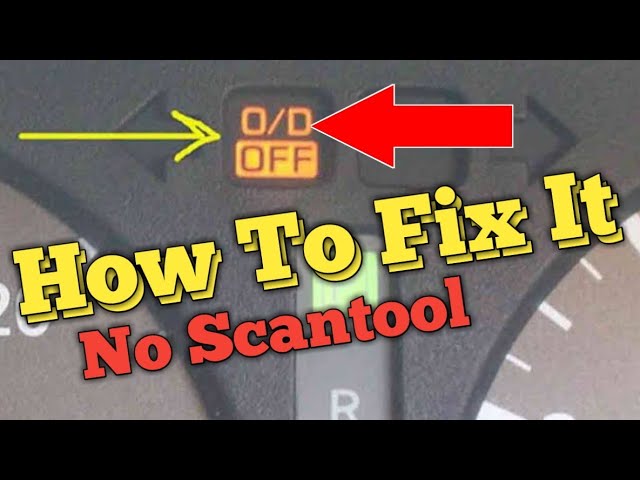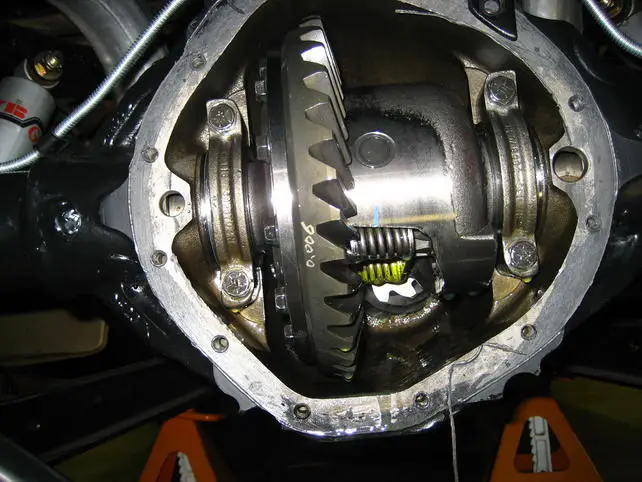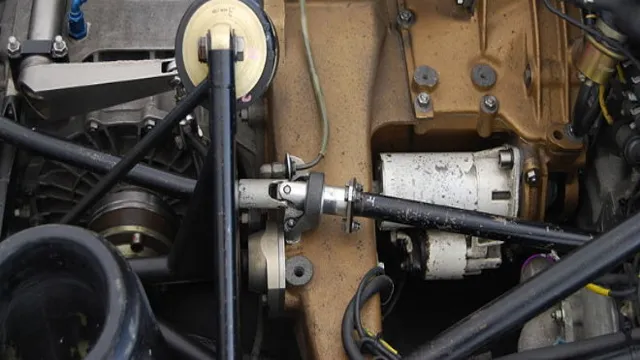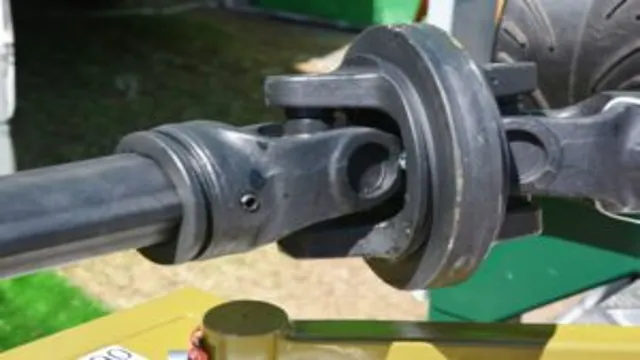How to Fix Overdrive Light Flashing
Seeing the overdrive light flashing on your car’s dashboard can be a cause for concern. It’s often an indication of a problem with the transmission or the overdrive system. However, there’s no need to panic just yet. In this guide, we?ll take a look at the possible causes for the overdrive light flashing and provide you with some detailed insights to help you understand what could be causing this issue. One common reason for the overdrive light blinking is when transmission fluid pressure is too high.
Additionally, a faulty Vehicle Speed Sensor (VSS) could also trigger the overdrive light to flash. Cold weather conditions can sometimes impact the truck’s performance, leading to the overdrive light blinking.
Another potential culprit could be a failing VSS, which may also cause erratic speedometer readings. It’s important to consider checking for Diagnostic Trouble Codes (DTCs) to pinpoint the exact issue before attempting any repairs. By scanning for codes first, you can avoid unnecessary part replacements and accurately diagnose the root cause of the blinking overdrive light. Remember, understanding the underlying reasons behind the blinking overdrive light is essential for effective troubleshooting and resolving the problem.
Understanding the Overdrive System
Before we delve into troubleshooting the overdrive light flashing, let’s take a moment to understand what the overdrive system does. In a nutshell, overdrive is the highest gear in the transmission. It allows the engine to run at a lower speed while the car is cruising, which can improve fuel efficiency and reduce engine wear. The overdrive system can be engaged or disengaged manually in some vehicles, while in others, it operates automatically.
What would cause the Overdrive light to flash?
Several potential reasons can cause the Overdrive (OD) light to flash in a vehicle. One possible cause is if the transmission fluid pressure becomes too high, triggering the OD light to blink. Additionally, a faulty Vehicle Speed Sensor (VSS) could lead to the OD light flashing. It’s worth noting that cold weather and the vehicle not reaching operating temperature could also be a factor in causing the OD light to blink, affecting the transmission’s ability to shift gears properly. Furthermore, a transmission trouble code may be stored, similar to a check engine light, indicating issues within the transmission system. Therefore, checking for transmission codes, particularly related to the VSS, is essential in diagnosing the reason behind the OD light flashing.
Potential Causes of Overdrive Light Flashing
When the overdrive light starts flashing, it’s typically a sign that something is amiss. Here are some common reasons why the overdrive light may start flashing: Problems with the transmission, such as low fluid levels or overheating, can trigger the overdrive light to flash. Faulty wiring, a malfunctioning sensor, or issues with the vehicle’s computer system can also cause the overdrive light to flash.
The overdrive solenoid, which controls the flow of transmission fluid to the overdrive unit, may be failing or experiencing issues. If the overdrive switch itself is faulty, it can erroneously trigger the overdrive light to flash. It’s important to investigate these potential causes thoroughly to pinpoint the exact issue leading to the sporadic blinking of the Overdrive light, as seen in a real-life example where a short in the steering column resulted in a similar malfunction. Remember to utilize diagnostic tools like an AE scanner to identify any underlying problems accurately. Here are some common reasons why the overdrive light may start flashing:
| Cause | Description |
|---|---|
| Transmission Issues | Problems with the transmission, such as low fluid levels or overheating, can trigger the overdrive light to flash. |
| Electrical Faults | Faulty wiring, a malfunctioning sensor, or issues with the vehicle’s computer system can also cause the overdrive light to flash. |
| Overdrive Solenoid Problems | The overdrive solenoid, which controls the flow of transmission fluid to the overdrive unit, may be failing or experiencing issues. |
| Faulty Overdrive Switch | If the overdrive switch itself is faulty, it can erroneously trigger the overdrive light to flash. |
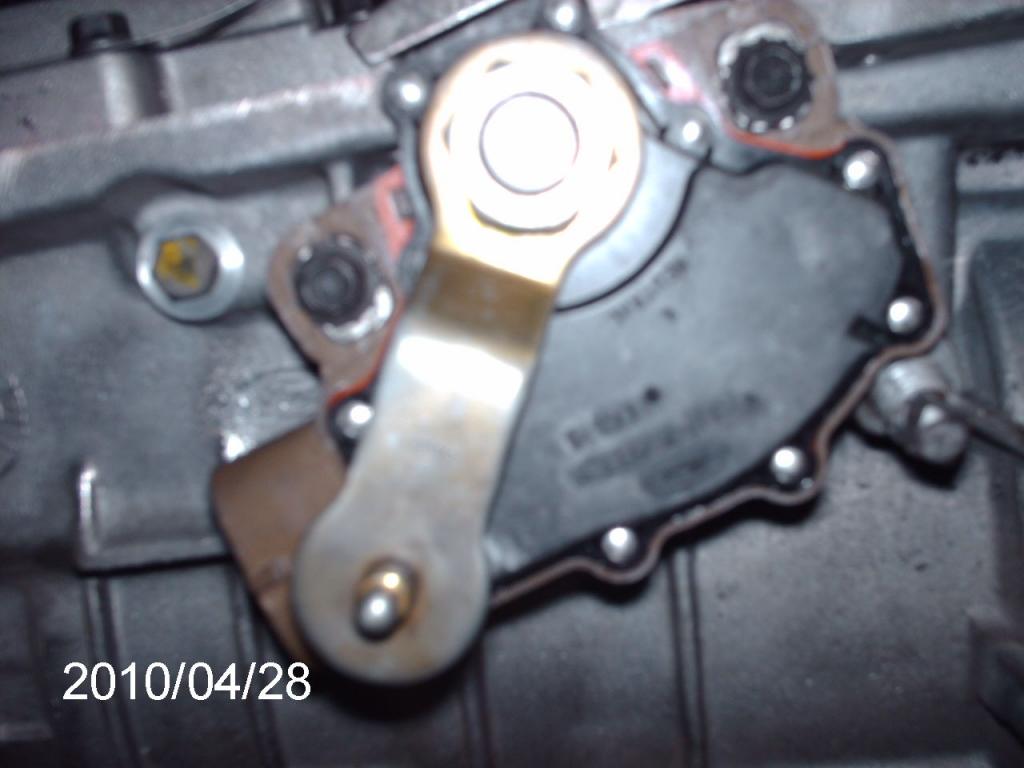
Credit: www.carcomplaints.com
Steps to Fix the Overdrive Light Flashing
Now that we’ve identified some potential causes, let’s talk about how you can go about resolving the issue. Keep in mind that the specific steps may vary depending on your vehicle make and model, so always refer to the manufacturer’s guidelines and, if necessary, consult a professional mechanic.
Check Transmission Fluid Levels
Low transmission fluid can lead to overheating and cause the overdrive light to flash. Start by locating the transmission fluid dipstick, usually found near the back of the engine. Ensure that the fluid level is within the recommended range. If it’s low, add the appropriate type of transmission fluid as per the manufacturer’s specifications.
Inspect For Transmission Leaks
Leaks in the transmission system can result in low fluid levels. Check the area beneath your vehicle for signs of red or brown fluid, indicating a transmission leak. If you detect a leak, it’s crucial to have it repaired as soon as possible to prevent further damage to the transmission.
Address Electrical Issues
If the flashing overdrive light is due to electrical faults, a thorough inspection of the wiring, sensors, and the vehicle’s computer system is necessary. Look for any frayed wires, corroded connections, or damaged sensors. In some cases, resetting the vehicle’s computer by disconnecting the battery for a few minutes can resolve minor electrical glitches.
Test The Overdrive Solenoid
If overdrive solenoid problems are suspected, a professional diagnostic test may be needed to determine if the solenoid is functioning properly. Depending on the findings, the solenoid may require cleaning, repair, or replacement to rectify the issue.
Check The Overdrive Switch
Finally, if all else fails, it’s crucial to thoroughly examine the overdrive switch for any signs of malfunction. It is imperative to conduct a comprehensive test to verify that the switch is transmitting the correct signals to the overdrive system. In the event that a defect is detected in the switch during the inspection process, a potential solution to address the flashing overdrive light issue could involve replacing the faulty switch.
When to Seek Professional Help
While the steps outlined above cover the basic troubleshooting measures, there are times when it’s best to seek the expertise of a qualified mechanic. If you’re uncomfortable performing the checks and repairs yourself or if the underlying issue is complex, involving the transmission or electrical system, it’s advisable to have a professional inspect and diagnose the problem.
Ignoring a flashing overdrive light can lead to more severe transmission problems and potentially costly repairs down the line. Addressing the issue promptly can help prevent further damage and ensure the continued smooth operation of your vehicle.
Frequently Asked Questions On How To Fix Overdrive Light Flashing
How Can I Fix An Overdrive Light Flashing?
To address the overdrive light flashing concern, it is essential to conduct a thorough examination of the transmission system. Begin by checking the levels of transmission fluid and scanning for any potential fault codes that may indicate underlying issues. Common triggers for the overdrive light flashing include transmission irregularities, malfunctioning sensors, or electrical faults. It is strongly advised against continued driving when the overdrive light is flashing, as this behavior can exacerbate damage to the transmission system. The cost of rectifying an overdrive light flashing problem can vary depending on the specific diagnosis, typically falling within the range of $200 to $1500.
What Are The Common Causes Of Overdrive Light Flashing?
Common causes of overdrive light flashing include transmission issues, faulty sensors, or electrical problems.
Is It Safe To Drive With The Overdrive Light Flashing?
Driving with the overdrive light flashing is not recommended as it can cause further damage to the transmission.
How Much Does It Cost To Fix An Overdrive Light Flashing Issue?
The cost to fix an overdrive light flashing issue can vary depending on the specific problem, but typically ranges from $200 to $1500.
Why is it important to check for Diagnostic Trouble Codes (DTCs) when the Overdrive light is flashing?
It is essential to check for Diagnostic Trouble Codes (DTCs) when the Overdrive light is flashing because this process helps to pinpoint the exact underlying issue that is causing the flashing Overdrive light. Without checking for DTCs, you would be acting blindly by attempting to fix the problem without a clear understanding of what is causing it. By checking for DTCs first, you gain insight into specific problems or malfunctions detected by the vehicle’s onboard diagnostic system. This information is crucial as it guides you in making informed decisions about the necessary repairs or maintenance needed to address the root cause of the flashing Overdrive light. Therefore, checking for DTCs is a prudent step to take before attempting any repairs to avoid unnecessary expenses and ensure an accurate and effective solution for the issue at hand.
Conclusion
Dealing with a flashing overdrive light can be worrisome, but armed with the knowledge of potential causes and troubleshooting steps, you can take proactive measures to resolve the issue. Regular maintenance, prompt attention to warning lights, and seeking professional help when needed are key to keeping your vehicle’s overdrive system in optimal condition. By addressing the flashing overdrive light promptly, you can maintain the efficiency and reliability of your vehicle’s transmission system.

